-
News & Trends -
Sales -
Marketing Related Topics -
B2B Software Guides Related Topics -
Free Tools & Resources -
- About Us About Us


A sales presentation is a long-form explanation of your business’s value. Because they can take up to 30 minutes to deliver, they’re reserved for highly qualified prospects in the lead nurturing phase of a sale. The best presentations describe a customer problem, explain a solution, name the benefits of solving the issue, and make a call-to-action. To help you master presentations, we’ve compiled the best sales presentation examples and articulated why they work so well.
In this sales presentation, Ricky is selling an online blogging course called Project 24. He starts by naming the troubles people run into when starting a blog and then giving the prospect a glimpse of what the course will help them achieve — a full-time income from blogging. Then, he stands up from his chair and goes over to a map covered with hundreds of yellow pins, and he reveals that each pin represents a student earning over $1,000 per month with their blog.
Right off the bat he has established credibility and intrigue. He’s proven that he delivers his promise to his customers time and time again. An act of showmanship like this to begin a presentation is perfect for hooking your prospects. After showing them the promised land and the people who’ve gotten there, Ricky then gives them a four-minute tour of the best features of the course. Finally, he goes over how to sign up for the course and asks his prospects to do it.
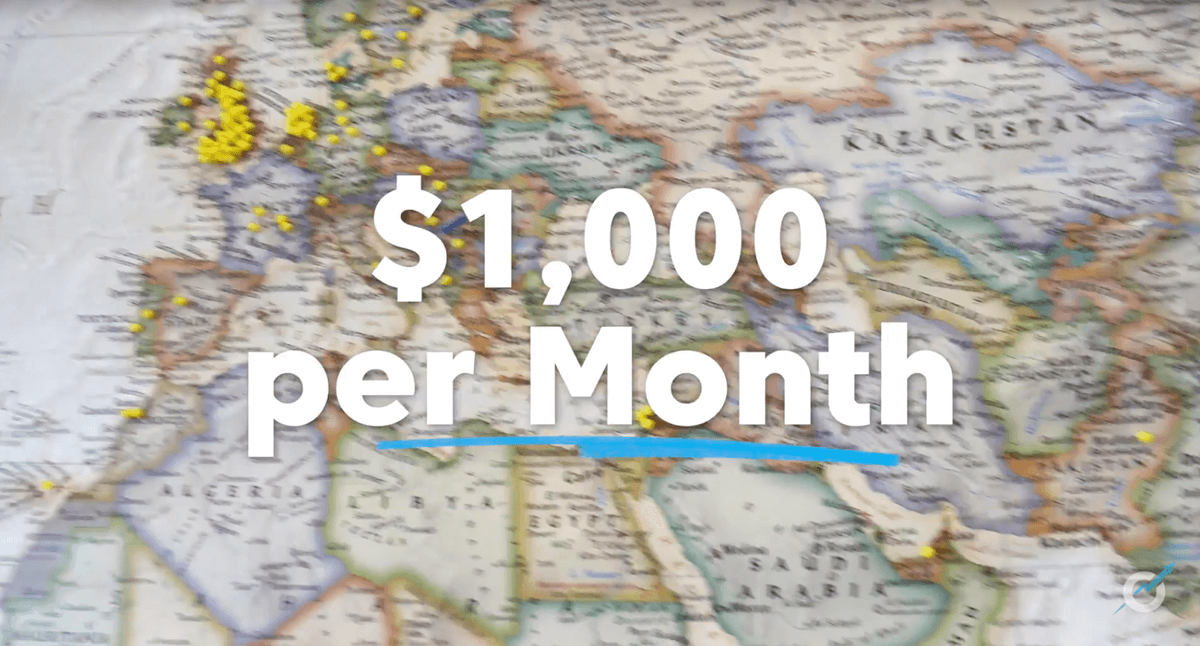
The major takeaway from this example is the power of props and showmanship to illustrate a point. As Ricky did with the yellow pins, find ways to support your claims with some sort of visual element. Your presentation hit the audience with more force.
Here’s another online course presentation — it's shorter than the last one and the presenter takes a slightly different approach. He first demonstrates his expertise by showing the many books he’s written on the subject. After gaining the lead’s trust, he explains how this coding course is different from the others out there. In this course, students won’t have to learn computer science and can start building things almost immediately.
Next, the sales rep reviews the benefits of taking the course, which in this case manifest as the coding tasks that students will learn to do. About three-quarters the way in, he drops the biggest value proposition: he'll teach them how to write programs that automate their busy work and increase their productivity. In case anyone isn’t interested in that, he also adds that coding is fun and will improve critical thinking skills. To finish, he asks leads to sign up for his course.
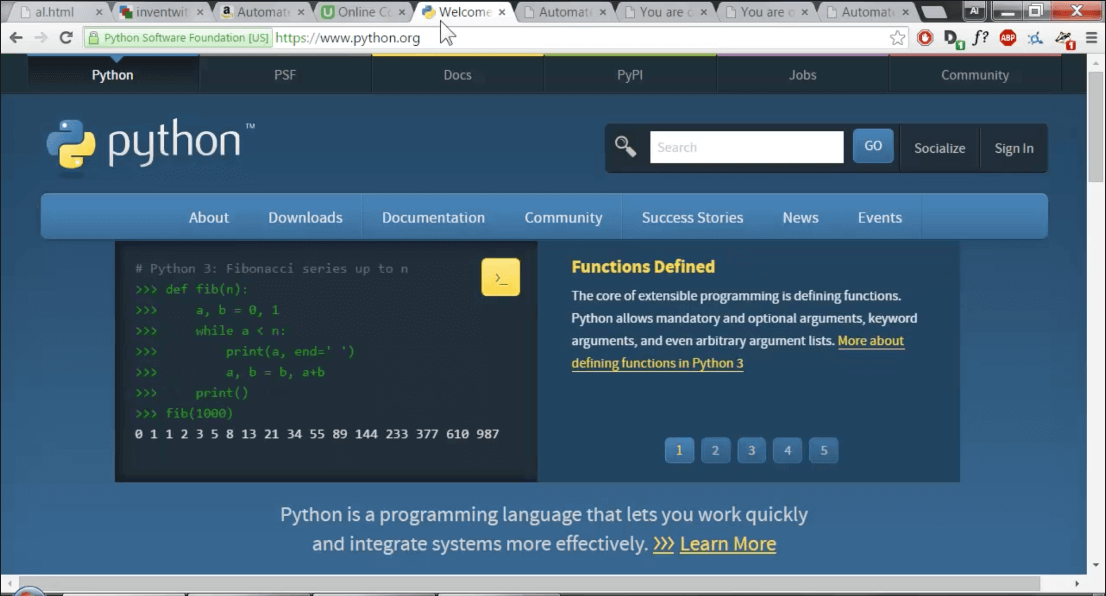
Note how this presenter first establishes how this coding course is different from and better than the others out there. In your presentations, consider bringing up complaints customers have with your competition and then showing them why that won’t happen with your business.
In this presentation, Neil Patel presents Keap, an email marketing tool. The presentation is technically a customer testimonial since he’s a user and not the company’s salesperson, but it still comes off as a well-constructed sales presentation for nurturing qualified leads. Neil begins in the classic manner — describing some major pain points for marketers — before introducing the product as the solution to those issues.
Next, he explains some ways that he uses the software and the benefits he receives. For example, one use case he gives is the ability to set up automated text messages to follow up with prospects to increase the closing rates and give salespeople more time to focus on other prospects. Because it’s a testimonial video, it’s missing a call-to-action, but besides that piece, it’s a presentation worthy of emulation.
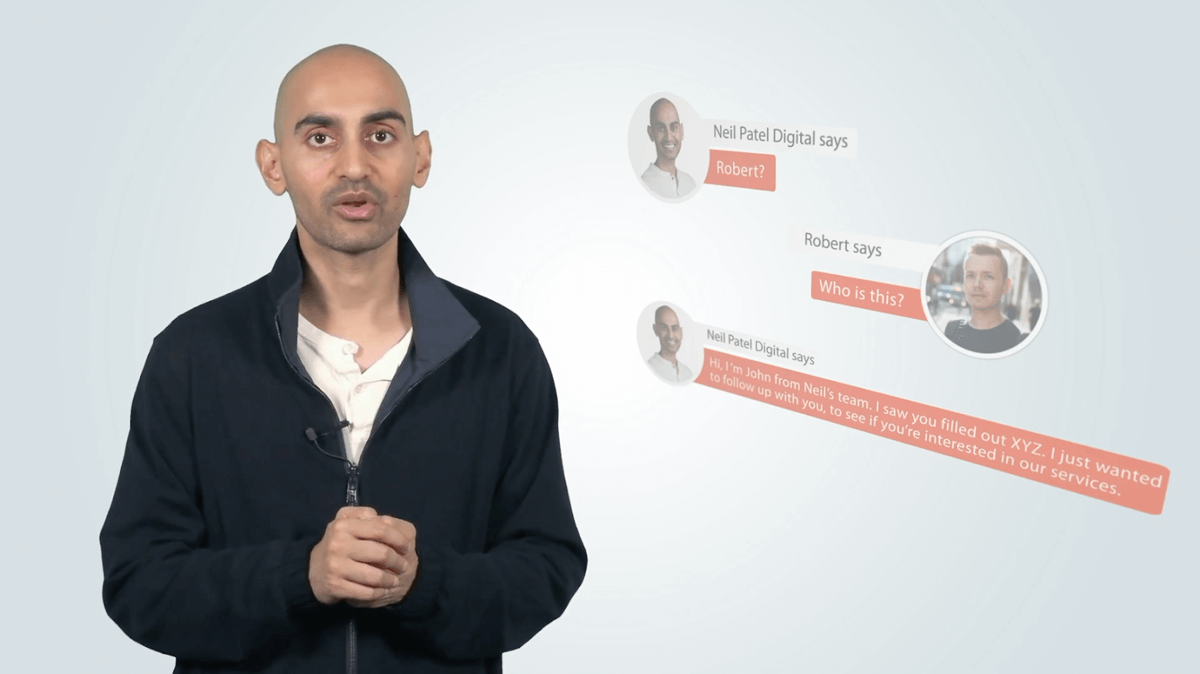
Something you should definitely consider emulating from this presentation is the structure — problem, solution, benefits — that he employs to hook and convince the reader to buy the tool. It works for every industry and type of sale.
The presenters begin by stating their goal — to show property managers why mobile inspection technology makes resident move-ins and move-outs painless. Next, the two salespeople introduce themselves as experts in the field and the product, HappyCo, as a useful tool for powering property operations. Then they lay out the agenda for the presentation, before embarking on a respectful critique of a current way of doing business, paper inspections.
To bolster their case, they show quotes from customers explaining how paper inspections hurt their business. One complained that their maintenance staff used to fix resident-caused damage without documenting it, thereby making it impossible to charge the resident. After proving the problems with paper methods, the presenter dives into the product and its benefits and another team member even gives a live software demo. It ends with questions and answers.
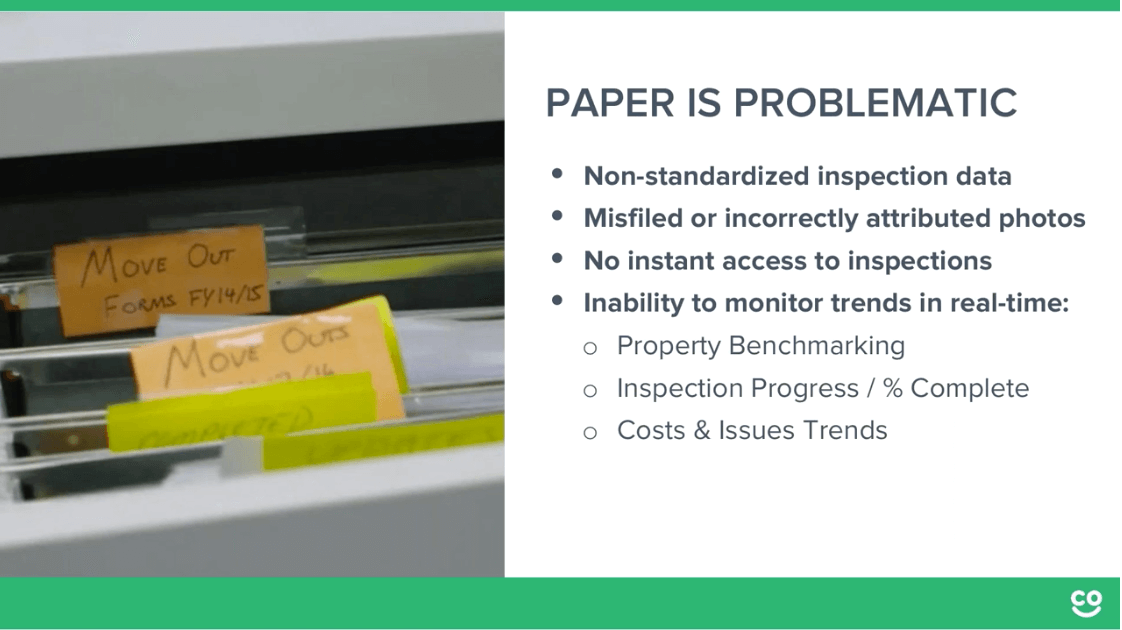
Including product demos in your presentations is a powerful tactic. And it doesn’t necessarily have to be a live demo either. For example, you could record videos of people using your product or software and then show those to help your audience make sense of how it works.
The presenter begins by introducing the tool, Mention, and tells her audience how it works in plain language. Next she uses a slide titled “What can I do with Mention?” and explains the three major use-cases of the tool and the resulting benefits. She then uses her next slides to give a deeper explanation of each of the three major use-cases she introduced in that first slide.
She then switches out of her slide deck and into a live demo. This is typical of software sales presentations. She spends the next 15 minutes showing her leads how to set up competitor tracking and how to analyze the data collected to discover insights that help them get a competitive advantage in their industry. After the demo, she switches back to slides and reviews the key takeaways, and asks interested viewers to schedule a personalized demo.
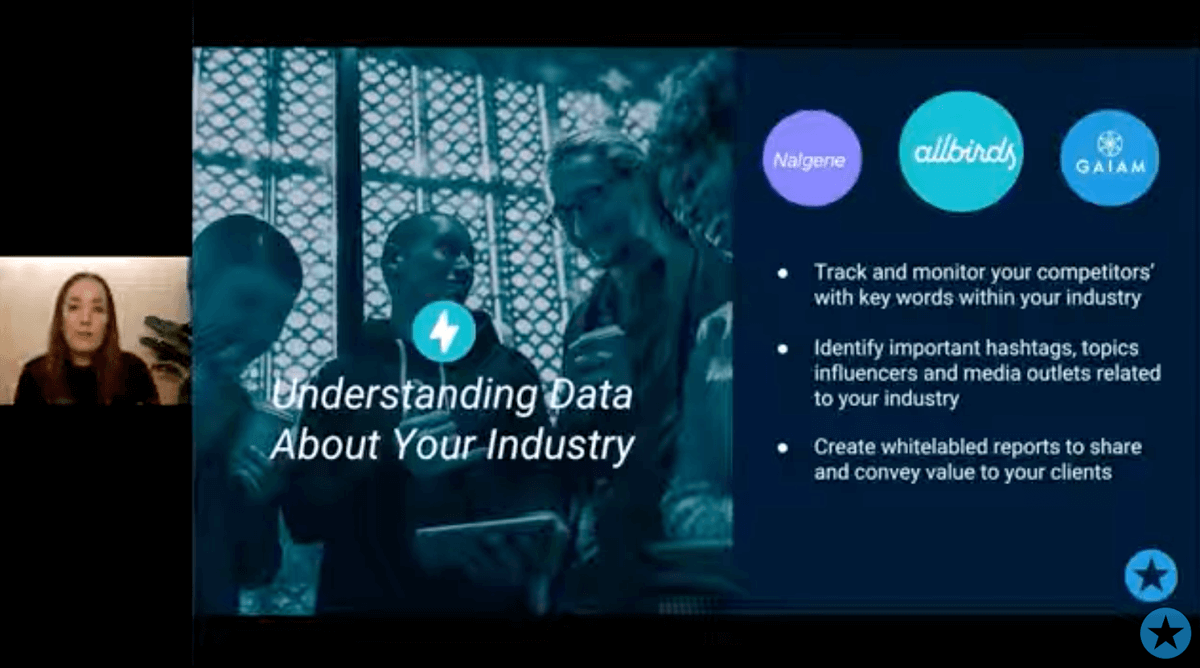
Although the presenter doesn’t begin with a problem, she does mention how each feature solves specific pain points when she’s presenting their benefits. Something she did that you could apply to your presentations is summarizing your presentation before making the call-to-action. This gets your audience thinking about how valuable your solution is, so they’re more likely to agree to the next steps when you make your ask.
This presenter, a HubSpot certified partner, starts by introducing a problem for many marketers — they have too many tools in their tech stack and things are messy. After spending some time with that problem, he introduces HubSpot, saying that “the antidote to complexity is organization.” The salesperson then describes HubSpot as a centralized communication platform, meaning that every app and software connects through it. It’s, in essence, a hub.
He then tells his viewers that this means data that used to be siloed off in different platforms all becomes available in HubSpot, and explains the awesome things that this allows users to do, like gain lead intelligence, automate tasks, run analyses, and handle ad attribution. Throughout the presentation, he uses screenshots of the software to add clarity to his feature explanations. It ends with him going over pricing plans and asking leads to call him to learn more.
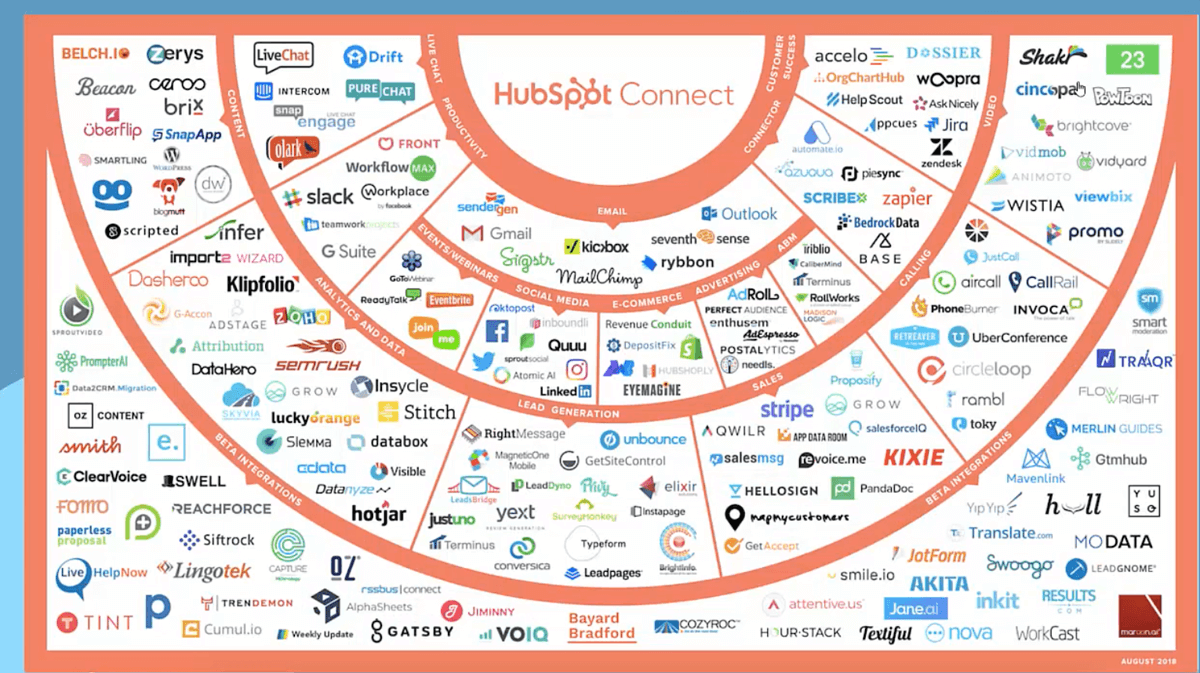
This presenter does a great job of presenting a problem and analyzing it in a way that makes him sound like an expert and evokes feelings of hatred for the problem in his audience. In your presentations, elaborate on the negative consequences of the problem you choose to mention. This aggravates the pain and makes prospects more eager to eliminate it.
In this sales presentation, Cory from LawYaw, a legal tech company, presents their document automation software and explains why it will help lawyers save time and improve productivity. After a short introduction, he sets an agenda, and a slide gives us the outline, which is worth zooming in on because it’s a great example of a persuasive structure. To begin, he discusses some new trends in the legal space and shares some opportunities to profit from these trends.
After establishing himself as knowledgeable in the industry, he analyzes a big problem for his buyers — document rejection — and lists its costs. After establishing the magnitude of the key issue, he positions document automation as a solution, explains how it works, and names its biggest benefits. To boost credibility, he also uses a customer success story. Next, he changes from a sales deck to a live demo, before rounding out the presentation with a Q&A session.
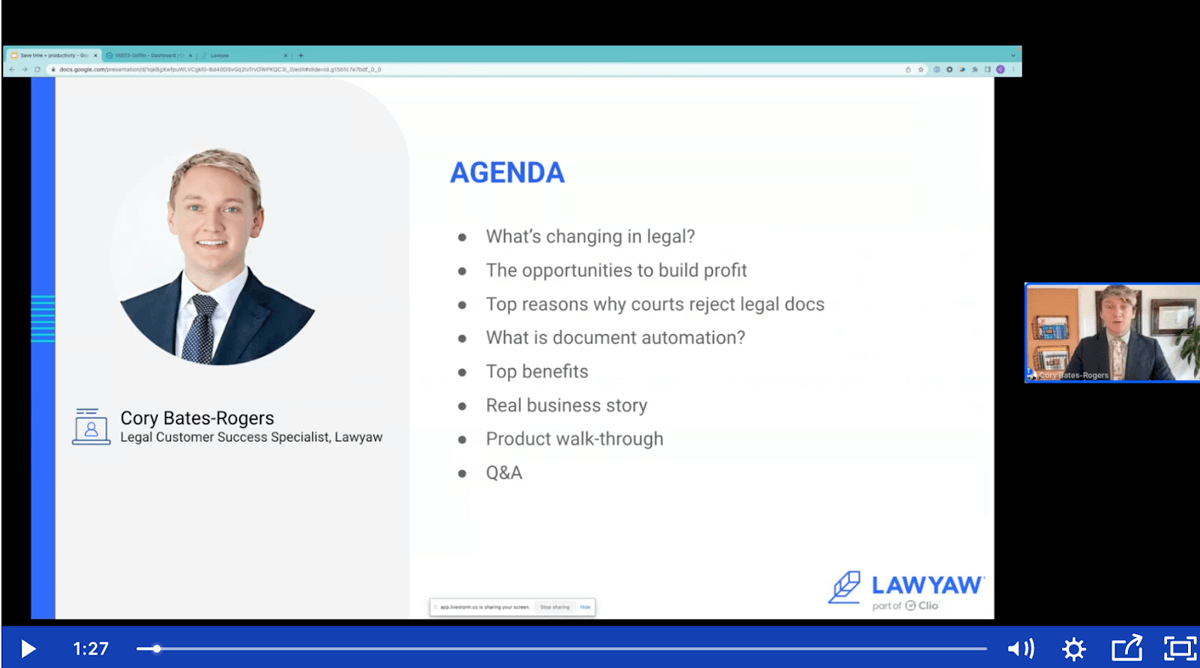
The agenda portion of his presentation is something you should consider incorporating into your own presentations. By providing an outline of what you’ll cover, you’re telling them what to expect, and giving them a pleasing sense of control over the experience.
This next sales presentation example portrays Melody, an Apple salesperson, introducing the new iPad (the second half of the video is a presentation for the iPad Pro). During the first two minutes, Melody goes over the new design, showing images of the phone. She discusses the new features and their benefits, including a new front camera placement, which is better for video calls (something her leads are likely using their iPads for).
At the two and half minute mark, she hands the reins to her partner, Mish, who explains another improvement to the hardware: a new keyboard called Magic Keyboard Folio. He then names some features and benefits, like “full-size keys, one millimeter of travel, and a responsive feel.” To finish, Melody lists the price and reviews why this product is so unique and valuable.
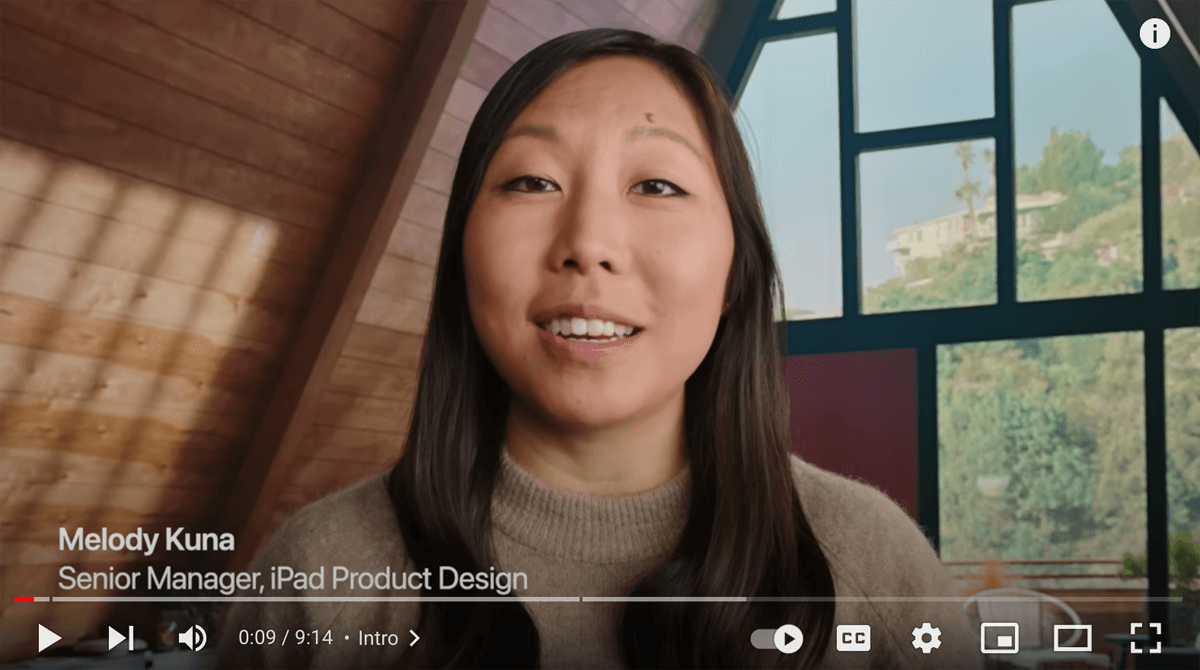
Note that whenever the second presenter names a feature, he almost always follows it with a benefit. The result almost always impresses a prospect more than how it was achieved. To really drive home the importance of your features, immediately state how they will positively impact the person’s business, job, or life.
Although this is a pitch to investors, the Brand Yourself owners use a sales deck and stay close to the ideal structure of a sales presentation. They start with a strong hook in the form of a story about their typical user. They tell the story of a young man fresh out of college who is highly qualified but still struggling to get a job because of his major issue, namely, that employers are researching him online and finding unflattering photos of him partying, of “gap year Steve.”
The sales duo uses their sales deck responsibly throughout the presentation, especially above, where they show a picture to get some laughs and get their buyers in a good mood. After sharing this story, they explain the major problem afflicting applicants today — bad online reputations, and then introduce their tool and how it works, using slide deck images to show the buyers. In the end, they state its value proportion: protects and improves how you look online.
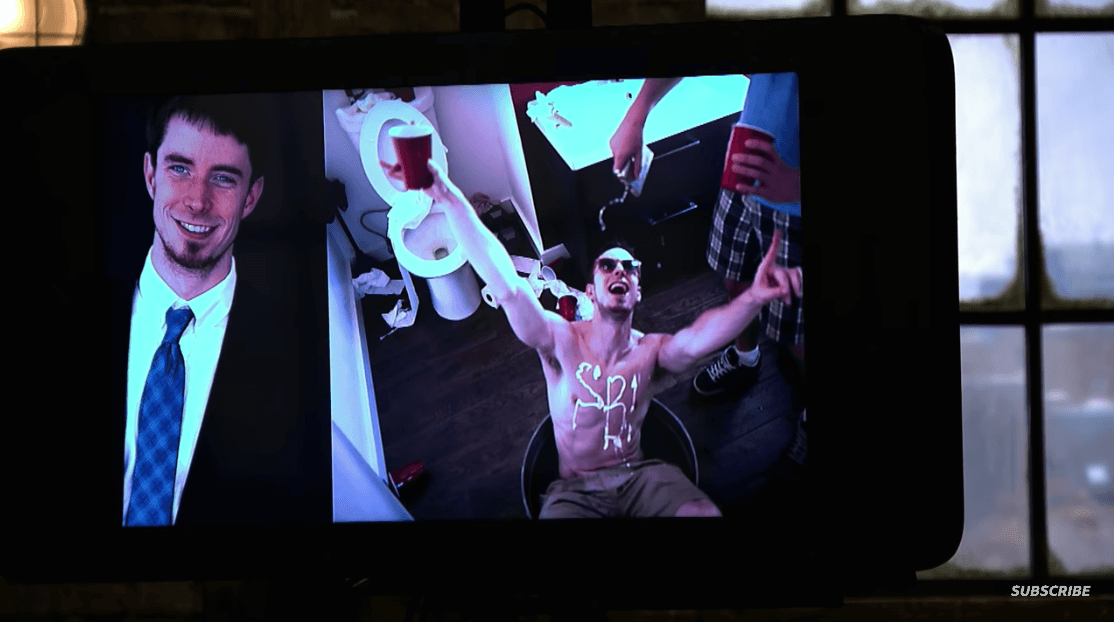
If you copy one thing from this presentation, it should be their use of humor to set the mood. Provided that the setting isn’t too professional, consider introducing a few jokes at the beginning. Jokes not only lighten the mood, but they also make your audience more likely to pay attention closely, because you’ve primed them to think that they might get another laugh.
This is a short yet persuasive presentation in which a freelance real estate photographer shares reasons why leads should hire him as their photographer. He begins by introducing himself and his business and then previews for his prospects what they’ll learn in this presentation. Then he starts listing the reasons for hiring him. Most of them are valuable differentiators that set him apart from the competition. For example, his customers receive free property websites.
They can use these website links to easily promote their listing across social media and other channels. Near the end of the presentation, he starts to show his prospects some great photographs he’s taken for past clients, all the while explaining why people who use professional photographers are more likely to sell their houses than people who don’t. To close out, he asks his audience members to call him, and puts his phone number up on the screen.
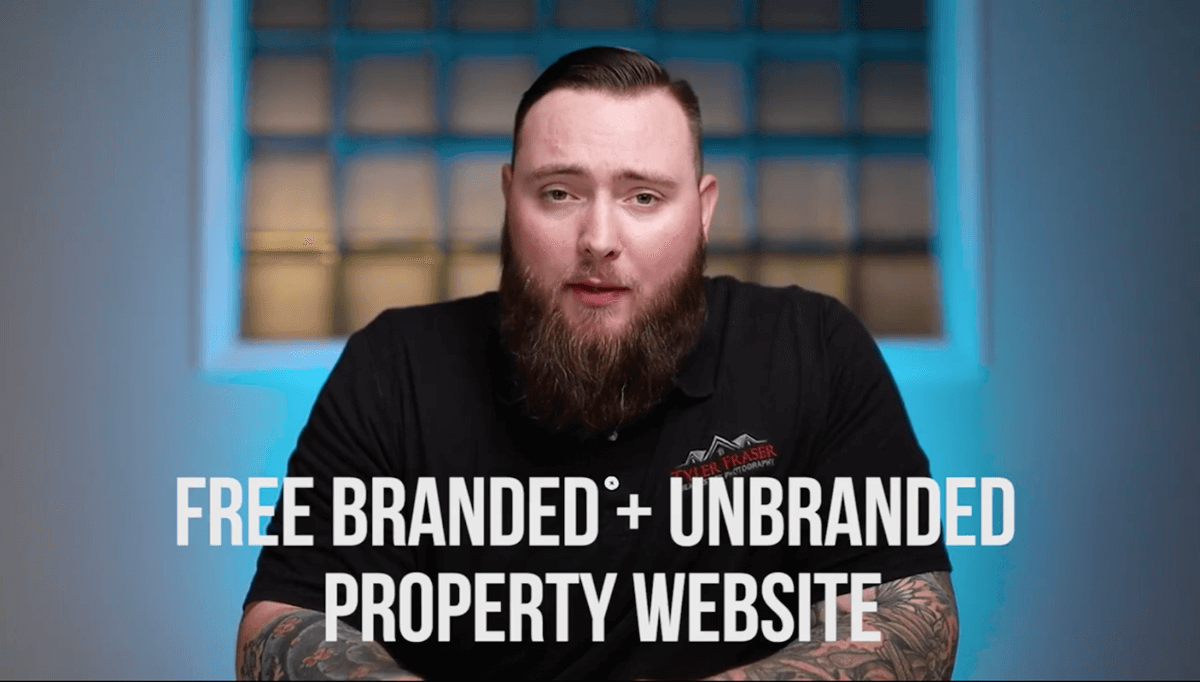
Differentiators help your business stand out from the crowd. They can be the reason a prospect chooses you over a competitor. So, when you can, follow this presenter’s lead and list valuable services or features that you provide but other companies don’t.
Here’s another great example for freelancers. The structure of this sales presentation is pretty simple. The presenter goes over ten reasons to hire him. They range from his being recognized by Microsoft as a valuable service provider to his transparency about pricing and process. Each reason gets anywhere from 20-30 seconds of elaboration and an image or two to emphasize his points. For instance, he displays his Microsoft certificate on the screen when talking about it.
After sufficiently proving that he has expertise, credibility, reliability, and other qualities potential clients are looking for in a writer, he closes the presentation with a clear call-to-action. He tells his leads to head over to the Contact page on his website and fill out the Contact form to get in touch.
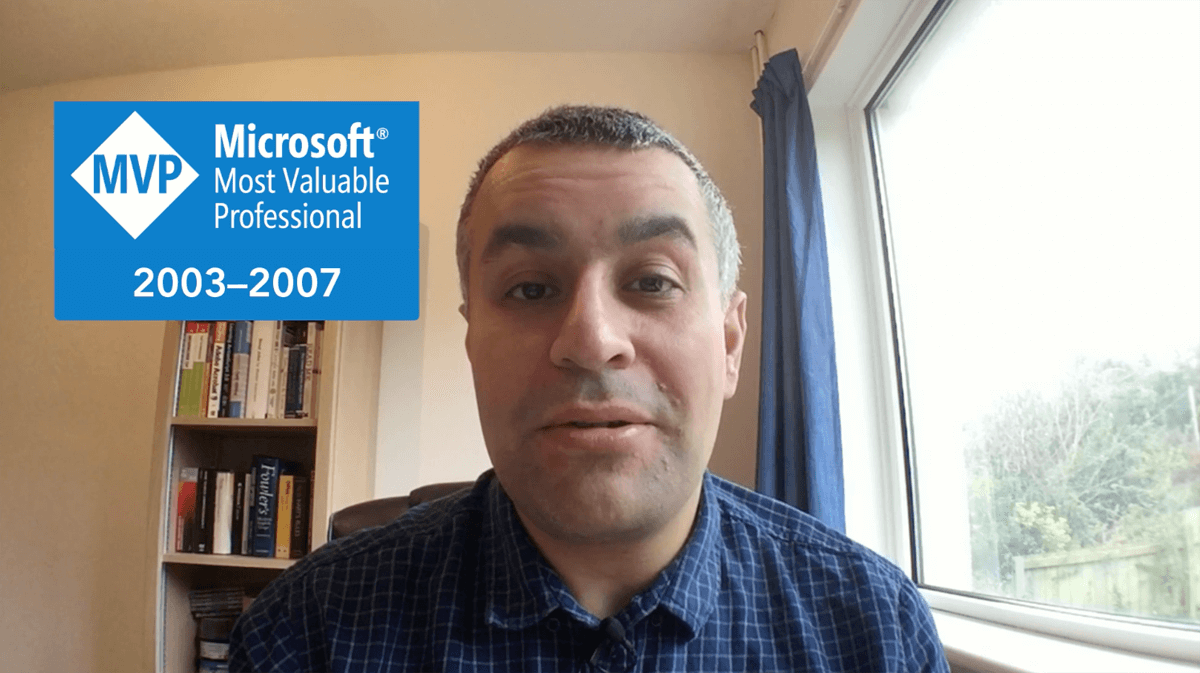
Although it’s a setup without much flair, the salesperson’s main points, along with the easygoing and confident attitude with which he delivers them, should entice potential buyers to reach out. One thing he nails is establishing himself as an expert in the field. Sprinkle in credibility indicators like education, credentials, and awards throughout your presentations to give your words and claims a bit more weight.
The mock sales presentation starts at the 2:20 minute mark when the listing agent begins his mission to convince a pretend homeowner to hire him as their agent. He first hints at his company’s successful track record and then explains their home selling process, which, among other methods, consists of taking magazine-grade photography and marketing the home on YouTube, email, and print marketing. He always explains the benefits of each strategy.
Then he drops what is probably the biggest value-add for his prospects — the fact that 33,000 people in Colorado subscribe to the magazine Colorado Homes, where he will advertise the house and it will get tremendous exposure. He continues to go over other strategies he’ll use to attract people to the house before executing a persuasive closing minute and asking the customer if they want to talk more about marketing their home.
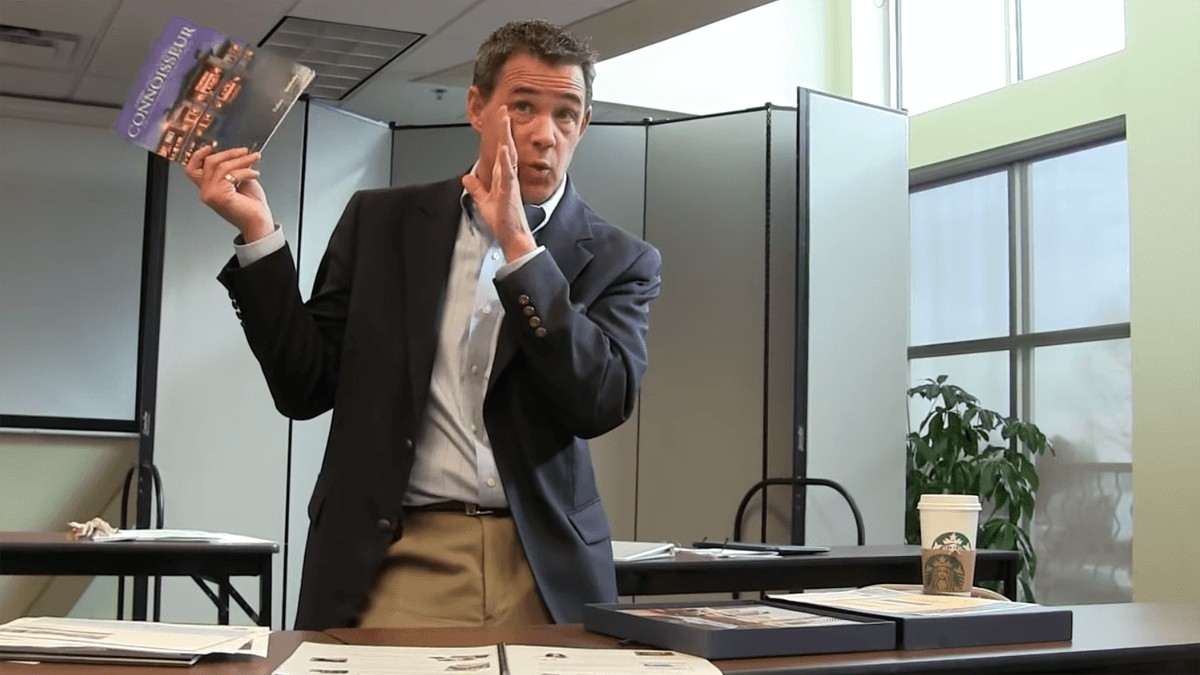
The best part of this sales presentation is his close. His voice drips with confidence, and he previews the call-to-action with a reminder of what separates him from other listing agents. Then he says, “So shall I pack my things up and leave or do you want to talk more about the marketing of your home?” Try to match his assertive style when making your CTAs.
In this sales presentation, a Subaru sales rep presents the new Impreza model to a large audience. He begins by appealing to the greatness of the Impreza tradition, stating that “value, safety, and longevity, are the calling cards for Impreza.” He explains that this car will stay true to the tradition, and then explores what makes this one distinct, and better than, former Imprezas — the fact that it's sportier and more fun to drive.
He then anticipates an objection about switching from sedan to hatchback, and deals with it by promising that this allows for a sportier design package and a roomier interior. Next, he goes over some other new features, and gets the audience to imagine all the places the car can take them (ski trips, camp, etc.) before invoking a metaphor and calling it “a modern-day swiss army knife.” Overall, this presentation is a great example of how to evoke desire with words.
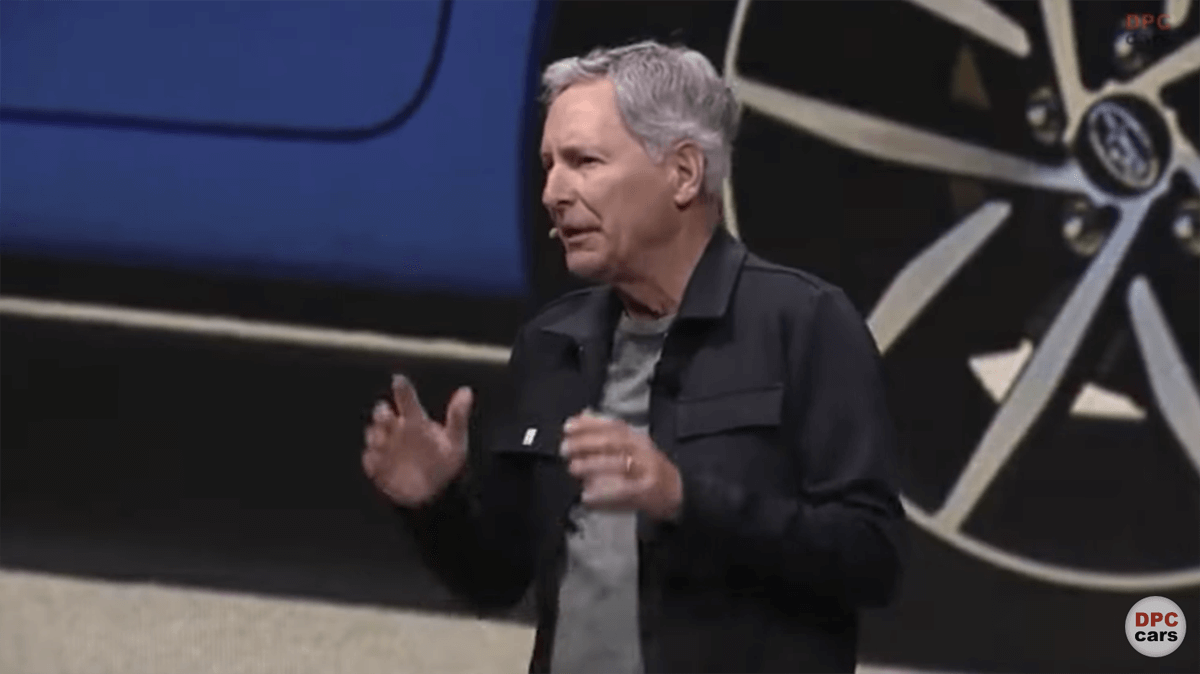
Anticipating concerns and hesitations your prospect might have and then proving why they’re unsound, as this presenter does brilliantly, is a great technique to use in your sales presentations. Consider picking the three sales objections you hear most often and rebutting them where it makes the most sense in the presentation. For instance, if people always question a feature’s functionality, deal with that objection right after presenting the feature.
In this filmed mock sales presentation, Mary, a wholesaler for a golf products company, presents to an owner of a golf retail store. She begins with small talk about golf and local clubs, which is a surefire avenue for connection seeing that her lead owns a golf store. After about a minute, she stops the chit-chat and sets the agenda, making sure to ask him if he agrees to it. Then, to set the stage and show she knows his situation, she reviews his last meeting with her company.
Next, she asks some questions. At this point, the presentation veers a little from traditional sales presentations. Typically, the seller would’ve already interviewed the lead on a previous meeting or discovery call. Despite that variation, the rest follows a more typical structure. She introduces the services and their value to him as a retailer. Then she reviews promotions like a military discount, the margin (32%). And, lastly, they negotiate the deal and come to an agreement.
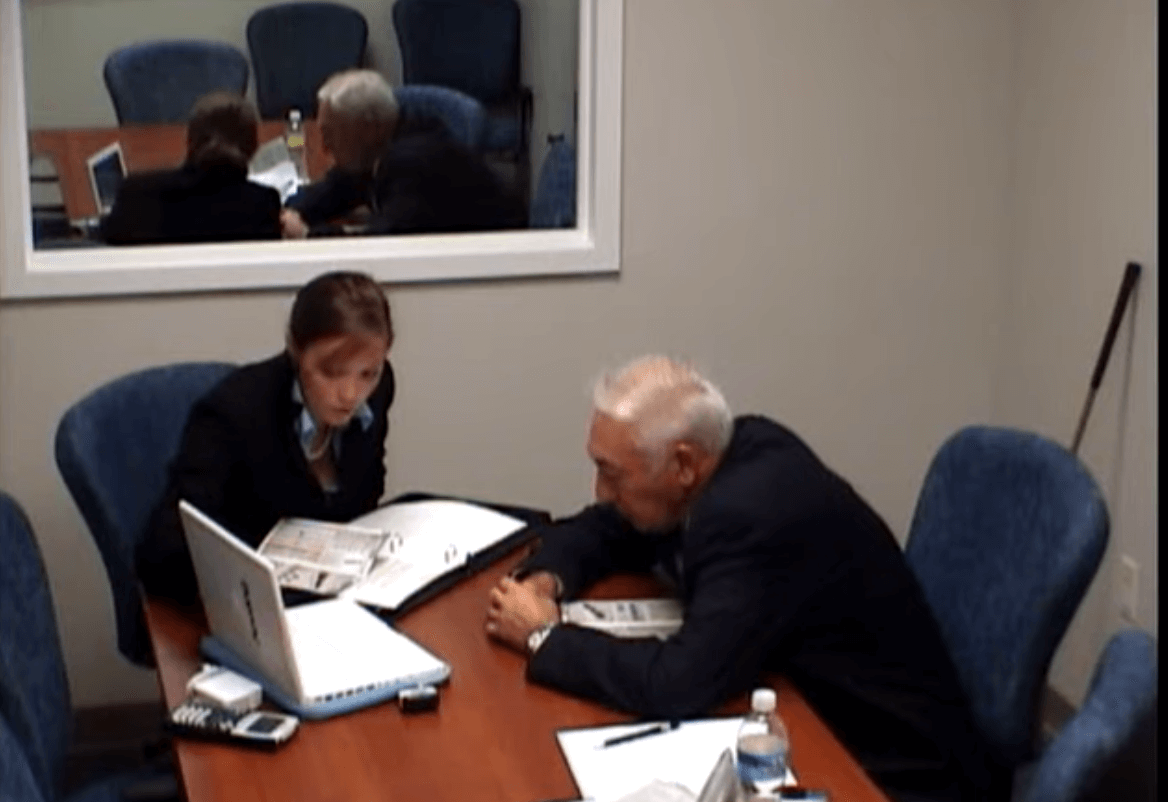
Small talk is a great way to get your prospect into a good and trusting mood before you start presenting. The best way to kickstart it is with open-ended questions. Consider doing some research about your prospect beforehand and coming up with 1-2 personalized questions based on their hobbies, job responsibilities, etc., For example, you might say “I noticed you used to work in finance — what made you switch to marketing?”
This sales presentation example from Shark Tank’s archives displays a consumer product entrepreneur pitching a high-tech sponge called Scrub Daddy. While it’s not a presentation in a traditional sense, and instead a pitch to investors, there’s still a lot to learn from it, primarily, the art of showmanship. To begin, Aaron briefly introduces his product, holding one in each hand, as “the cutest but most high-tech scrubbing tool in the world.” This piques the viewers’ interest.
Next, he shares the unique selling proposition — that the sponge changes texture according to the water temperature. To illustrate, he immerses one sponge in hot water and the other in cold water for a few seconds. After taking them out, he pounds on each with a 10-pound weight. The hot one is like a rock, while the soft one squeezes under the weight.
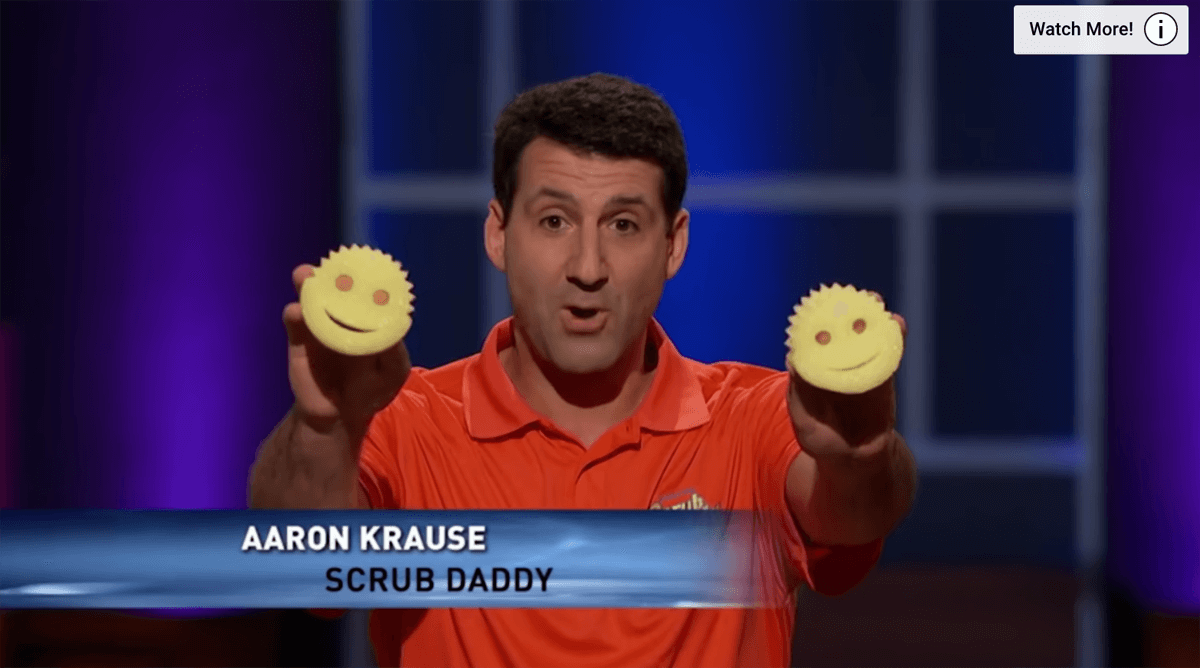
For salespeople, the main takeaway here is to find interesting ways to quickly demo your product mid-presentation. You can demo it on your slides or in person. If you’re selling an unbreakable water bottle, displaying a video of it being run over by a car and keeping its form will impress and entertain your audience and also convince them that your claims are true.
Persuasive sales presentations are hyper-focused on proving two things: that the problem is serious, and that their solution is well equipped to solve it. Further, the best presentations precede this discussion with introductions and an agenda, follow it with a strong call-to-action, and make use of helpful slides throughout. Studying examples is a great exercise to learn how to present. For more education, check out how to create and deliver a sales presentation.


Sam is a former SaaS sales rep turned freelance writer. He spent his career selling real estate technology to C-suite executives before switching over to blogging, where he now covers sales, marketing, and small business topics. Sam specializes in lead generation, lead nurturing, and deal closing articles for Selling Signals. When he’s not researching the latest sales trends, he’s either penning short stories, hiking, or reading in NYC’s Washington Square Park.

Selling Signals delivers actionable advice for sales and marketing professionals. Learn strategies that help you hit targets, strengthen customer relationships, and win more business. Get expert advice on lead generation, sales processes, CRM software, sales management, and account management directly to your inbox.
Property of TechnologyAdvice. © 2026 TechnologyAdvice. All Rights Reserved
Advertiser Disclosure: Some of the products that appear on this site are from companies from which TechnologyAdvice receives compensation. This compensation may impact how and where products appear on this site including, for example, the order in which they appear. TechnologyAdvice does not include all companies or all types of products available in the marketplace.